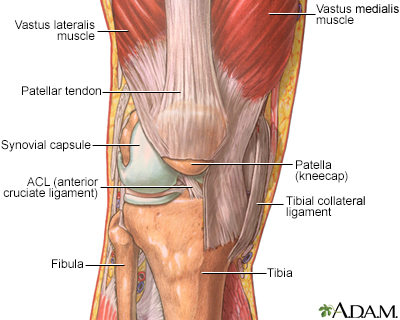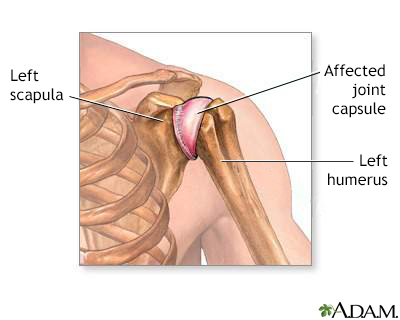Viral arthritis
Definition
Viral arthritis is swelling and irritation (inflammation) of a joint caused by a viral infection.
Alternative Names
Infectious arthritis - viral
Causes
Arthritis may be a symptom of many virus-related illnesses. It usually disappears on its own without any lasting effects.
It may occur with:
- Enterovirus
- Dengue virus
- Hepatitis B
- Hepatitis C
- Human immunodeficiency virus (HIV)
- Human parvovirus
- Mumps
- Rubella
- Alphaviruses, including chikungunya
- Cytomegalovirus
- Zika
- Adenovirus
- Epstein-Barr
- Ebola
Note: This list may not be all inclusive.
It may also occur after immunization with the rubella vaccine, which is typically given to children.
While many people are infected with these viruses or receive the rubella vaccine, only a few people develop arthritis. No risk factors are known.
Symptoms
The main symptoms are joint pain and swelling of one or more joints.
Exams and Tests
A physical examination shows joint inflammation. A blood test for viruses may be performed. In some cases, a small amount of fluid may be removed from the affected joint to determine the cause of the inflammation.
Treatment
Your health care provider may prescribe pain medicines to relieve discomfort. You may also be prescribed anti-inflammatory medicines.
If joint inflammation is severe, aspiration of fluid from the affected joint may relieve pain.
Outlook (Prognosis)
The outcome is usually good. Most viral arthritis disappears within several days or weeks when the virus-related disease goes away.
When to Contact a Medical Professional
Contact your provider for an appointment if arthritis symptoms last longer than a few weeks.
Gallery


References
Gasque P, Guillot X. Viral arthritis. In: Firestein GS, Budd RC, Gabriel SE, Koretzky GA, McInnes IB, O'Dell JR, eds. Firestein and Kelley's Textbook of Rheumatology. 11th ed. Philadelphia, PA: Elsevier; 2021:chap 121.
Ohl CA. Infectious arthritis of native joints. In: Bennett JE, Dolin R, Blaser MJ, eds. Mandell, Douglas, and Bennett's Principles and Practice of Infectious Diseases. 9th ed. Philadelphia, PA: Elsevier; 2020:chap 103.